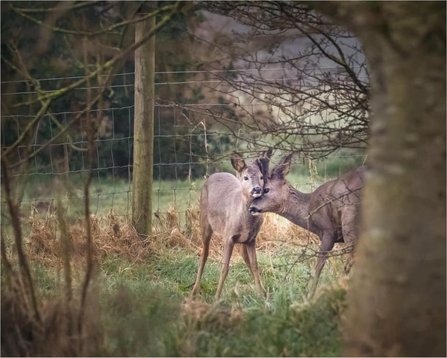Mere Sands Wood
From flowering coltsfoot to lesser celandines and marvellous marsh marigolds, March was prime-time for spring flowers at Mere Sands Wood in Rufford. The nature reserve bloomed with colour, and we even saw long-tailed tits begin nesting on the dry heath. In the woodland, scarlet elfcup fungi were still at their bright-red best, and song thrushes erupted into song amongst the coppiced trees. Dunnocks, robins, blue tits and nuthatches really ramped up their chorus, and frogs and toads appeared more frequently as they made their way to their breeding pools.




